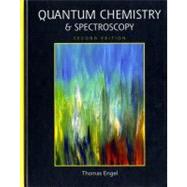
| From Classical to Quantum Mechanics | |
| Why Study Quantum Mechanics? | |
| Quantum Mechanics Arose Out of the Interplay of Experiments and Theory | |
| Blackbody Radiation | |
| The Photoelectric Effect | |
| Particles Exhibit Wave-Like Behavior | |
| Diffraction by a Double Slit | |
| Atomic Spectra and the Bohr Model for the Hydrogen Atom | |
| The Schrodinger Equation | |
| What Determines If a System Needs to Be Described Using Quantum Mechanics? | |
| Classical Waves and the Nondispersive Wave Equation | |
| Waves Are Conveniently Represented as Complex Functions | |
| Quantum Mechanical Waves and the Schrodinger Equation | |
| Solving the Schrodinger Equation: Operators, Observables, Eigenfunctions, and Eigenvalues | |
| The Eigenfunctions of a Quantum Mechanical Operator Are Orthogonal | |
| The Eigenfunctions of a Quantum Mechanical Operator Form a Complete Set | |
| Summing Up the New Concepts | |
| The Quantum Mechanical Postulates | |
| The Physical Meaning Associated with the Wave Function | |
| Every Observable Has a Corresponding Operator | |
| The Result of an Individual Measurement | |
| The Expectation Value | |
| The Evolution in Time of a Quantum Mechanical System | |
| Using Quantum Mechanics on Simple Systems | |
| The Free Particle | |
| The Particle in a One-Dimensional Box | |
| Two- and Three-Dimensional Boxes | |
| Using the Postulates to Understand the Particle in the Box and Vice Versa | |
| The Particle in the Box and the Real World | |
| The Particle in the Finite Depth Box | |
| Differences in Overlap between Core and Valence Electrons | |
| Pi Electrons in Conjugated Molecules Can Be Treated as Moving Freely in a Box | |
| Why Does Sodium Conduct Electricity and Why Is Diamond an Insulator? | |
| Tunneling through a Barrier | |
| The Scanning Tunneling Microscope | |
| Tunneling in Chemical Reactions 5.8 | |
| (Supplemental) Quantum Wells and Quantum Dots | |
| Commuting and Noncommuting Operators and the Surprising Consequences of Entanglement | |
| Commutation Relations | |
| The Stern-Gerlach Experiment | |
| The Heisenberg Uncertainty Principle | |
| (Supplemental) The Heisenberg Uncertainty Principle Expressed in Terms of Standard Deviations | |
| (Supplemental) A Thought Experiment Using a Particle in a Three-Dimensional Box | |
| (Supplemental) Entangled States, Teleportation, and Quantum Computers | |
| A Quantum Mechanical Model for the Vibration and Rotation of Molecules | |
| Solving the Schrodinger Equation for the Quantum Mechanical Harmonic Oscillator | |
| Solving the Schrodinger Equation for Rotation in Two Dimensions | |
| Solving the Schrodinger Equation for Rotation in Three Dimensions | |
| The Quantization of Angular Momentum | |
| The Spherical Harmonic Functions | |
| (Optional Review) The Classical Harmonic Oscillator | |
| (Optional Review) Angular Motion and the Classical Rigid Rotor | |
| (Supplemental) Spatial Quantization | |
| The Vibrational and Rotational Spectroscopy of Diatomic Molecu | |
| Table of Contents provided by Publisher. All Rights Reserved. |
The New copy of this book will include any supplemental materials advertised. Please check the title of the book to determine if it should include any access cards, study guides, lab manuals, CDs, etc.
The Used, Rental and eBook copies of this book are not guaranteed to include any supplemental materials. Typically, only the book itself is included. This is true even if the title states it includes any access cards, study guides, lab manuals, CDs, etc.